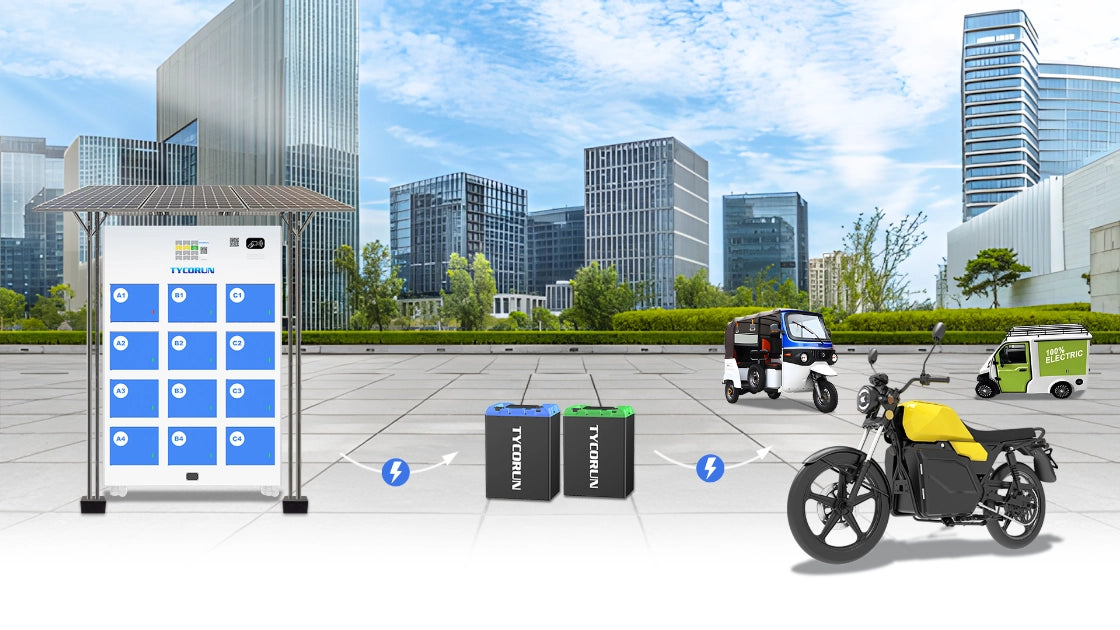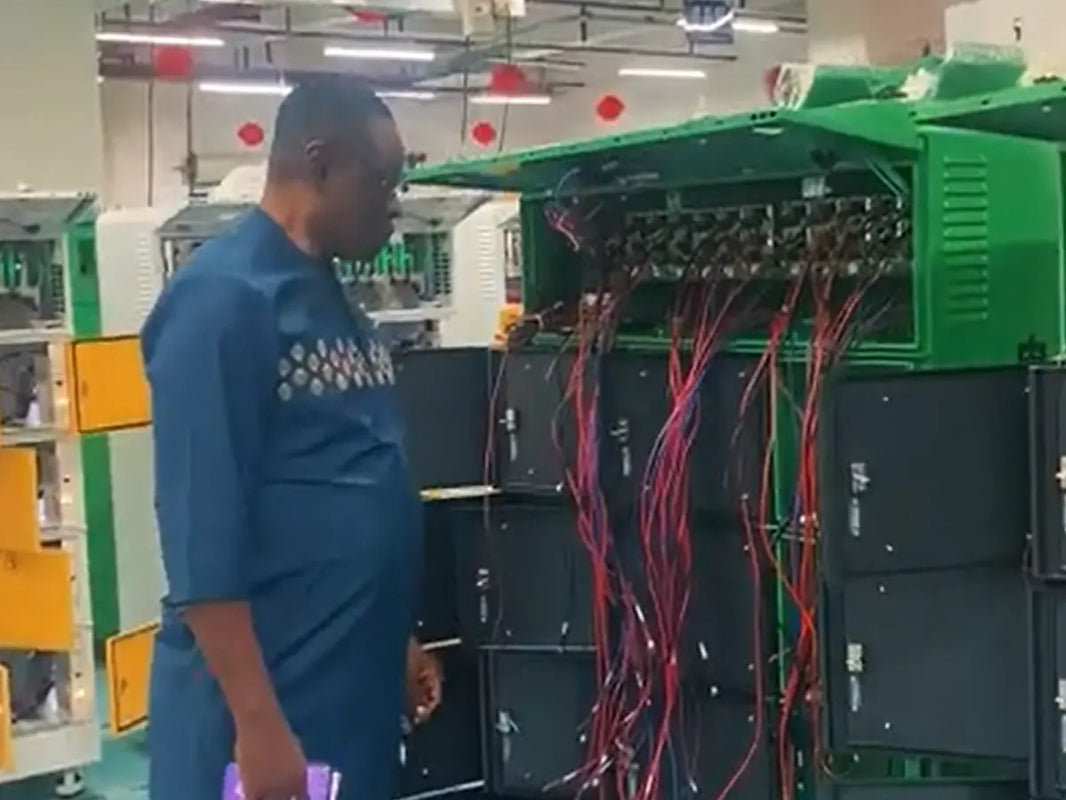
Main content:
- What is large scale energy storage
- Challenges of large-scale energy storage deployment
- Key technologies for large scale energy storage
- The global market of large scale energy storage
- China's large-scale energy storage market
- Large scale energy storage market in Europe
- Large scale energy storage market in the United States
- Future prospects of large capacity energy storage
- Conclusion
In 2025, the energy storage industry will enter a new round of structural adjustment. In the past two years, the rapid development of energy storage installed capacity has driven the rapid iteration of energy storage technology. The dominant lithium-ion battery energy storage products have an iteration cycle of basically six months, and the continuous increase in battery cells and system capacity has become the mainstream trend of technological evolution.
This article explores the development of large scale energy storage systems, focusing on key technologies of large scale energy storage battery cells, market dynamics, and global deployment challenges.
What is large scale energy storage
A large-scale energy storage system is a complex systematic engineering that involves battery equipment on the DC side and inverter equipment on the AC side. The large storage system mainly includes key equipment such as battery management system (BMS), power conversion system (PCS), energy management system (EMS), etc. Among them, battery cost accounts for the highest proportion of 67%, followed by energy storage PCS at 10%, battery management system BMS and energy management system EMS account for 9% and 2% respectively.
Large scale energy storage systems typically have a power output in the megawatt (MW) range, even up to hundreds of MW, and can store several megawatt hours or even hundreds of megawatt hours of electricity. Such a huge body determines that its main battlefield is on the grid side and power supply side, shouldering the important tasks of balancing grid supply and demand, smoothing the intermittency of new energy generation, and improving power quality. When large-scale photovoltaic or wind power is connected to the power grid, the large storage system can store excess electricity during peak power generation and release it during peak or low power consumption periods, avoiding energy waste and ensuring stable operation of the power grid.

Large scale energy storage applications
Large scale storage is mainly deployed on the grid side and power supply side, and can be regarded as the "anchor" of the power system. On the grid side, facing the intermittency and volatility of new energy generation, the large storage system can adjust charging and discharging in real time, balance grid supply and demand, avoid voltage and frequency fluctuations, and ensure power quality.
A large scale wind power base in northwest China, equipped with large storage facilities, stores energy during low peak periods and releases it during peak periods, ensuring stable integration of wind power into the grid. On the power side, collaborating with traditional power plants such as thermal power and hydropower, participating in frequency and voltage regulation, enhancing the flexibility and stability of the power system, and assisting in the green transformation of the energy structure are key supports for building a new type of power system.

Challenges of large-scale energy storage deployment
Cost pressure
High investment, economies of scale, cost reduction, large-scale energy storage projects require significant upfront investment, covering various aspects such as high-capacity energy storage batteries, high-power PCS, complex battery management systems (BMS), energy management systems (EMS), and large-scale civil engineering projects.
Taking a 100MW/200MWh lithium battery energy storage project as an example, the total investment of battery cost plus other supporting equipment and installation and commissioning costs can reach hundreds of millions of yuan or even higher. However, as the project scale expands, technology advances, and the industrial chain matures, costs are showing a downward trend.
Policy dependence
The market-oriented revenue model needs to be improved after the subsidy reduction, such as China's cancellation of mandatory allocation and storage subsidies for new energy in 2023.
Security risks
The large scale energy storage's battery thermal management protection and fire protection standards for thermal runaway urgently need to be upgraded, such as the new national standard after 23 energy storage fires in South Korea.

Key technologies for large scale energy storage
The technical requirements for large-scale storage systems are extremely high. On the one hand, energy storage inverters (PCS) need to have high conversion efficiency, often exceeding 95%, to reduce energy loss during the conversion process and ensure the economic viability of energy storage projects. At the same time, the response speed must be fast, able to accurately respond to grid dispatch instructions within milliseconds, quickly adjust charging and discharging power, maintain grid frequency and voltage stability, and ensure the stable integration of large-scale new energy power into the grid.
On the other hand, it is necessary to be deeply compatible with various energy storage batteries and complex power grid systems, adapt to the charging and discharging characteristics, voltage and current ranges of different batteries, as well as the access standards and operating conditions of the power grid, to ensure stable and efficient operation of the system, which involves complex algorithms, control technologies, and engineering practice accumulation.
At the level of enterprise competition, the fierce competition for high-capacity battery cells is particularly challenging for battery manufacturers in terms of safety design, production, and manufacturing capabilities. Large capacity battery cells reduce the number of cells and connection nodes required for energy storage systems by increasing the energy density of individual cells, thereby reducing the land occupation and operational complexity of large scale energy storage projects, and promoting the economic viability of GW level projects.
Since 2024, 314Ah batteries have gradually replaced 280Ah batteries as the mainstream of the energy storage market in large scale energy storage systems. At the same time, battery companies such as CATL, EVE Energy, Envision Energy, and Sunwoda have launched 500Ah+battery cells to actively prepare for long-term energy storage. The innovation of the next generation of high-capacity energy storage batteries revolves around cycle life, high safety, and ultra-low cost.
In order to address the safety challenges of large capacity cells in large-scale energy storage, the lamination process has become the mainstream choice. Compared with the traditional winding process, the lamination technology can avoid the problem of stress concentration at the edge of the pole piece, improve the utilization rate of the shell space, and achieve the accuracy rate of thermal runaway early warning of over 99% through innovations such as nano coating diaphragm, gel electrolyte, etc. The 325Ah short blade laminated battery cells developed by SVOLT have a thickness of only 21mm and a grouping efficiency improvement of 30%. They are compatible with overseas standard rack designs and lay the foundation for global layout.

The global market of large scale energy storage
Driven by strong policies and market forces, large-scale energy storage is now on a strong rise.
China's large-scale energy storage market
As of the end of 2024, the installed capacity of renewable energy in China reached 1.889 billion kilowatts, a year-on-year increase of 25%, accounting for about 56% of the country's total installed capacity. Among them, the installed capacity of wind power was 521 million kilowatts, the installed capacity of solar power was 887 million kilowatts, and the total installed capacity of wind power and photovoltaic accounted for 74.54% of the installed capacity of renewable energy. China has achieved the target of a total installed capacity of 1200GW for wind and solar power by 2030 six years ahead of schedule.
Benefiting from policy regulation and the continuous promotion of electricity market reforms in some regions, the scale and structure of China's energy storage installed capacity will gradually be optimized in 2024, and the proportion of independent energy storage with higher utilization rate will continue to increase in the newly added installed capacity.

Large scale energy storage market in Europe
Italy plans to deploy approximately 50GW of solar energy and 16GW of wind energy by 2030, with a significant portion to be deployed in the southern and island regions, which will face severe flexibility issues in the future. By 2030, the expansion of power storage and transmission grids is crucial for achieving the growth of renewable energy.
According to Solar Power's forecast, the installed capacity of large-scale energy storage in Italy will reach 5.2 GWh in 2024, accounting for 67% of the total installed capacity of energy storage; It is expected to exceed 8GWh by 2028.
In addition, in Germany, the proportion of wind and solar power generation in the first ten months of 2024 reached 44%, driving significant fluctuations in the prices of the power grid and electricity spot market. Energy storage stations that can provide auxiliary services and have arbitrage opportunities have seen a significant increase in revenue. From January to August 2024, the unit annualized revenue of Germany's large-scale energy storage projects was approximately 100-150 euros/kW/year. The current unit cost of energy storage power plants in Europe is about 600-700 euros/kW, corresponding to a project payback period of only 5-7 years.
According to BSW Solar, the German solar energy association, benefiting from good project yields, the demand for large-scale storage in Germany is expected to accelerate, with an estimated 6.7GWh of new installed capacity in 2025, a year-on-year increase of 158%.
In September 2024, Spain proposed in its National Energy and Climate Plan (NECP) to increase the proportion of renewable energy in the electricity structure to 81% by 2030, with a target of installing a total of 76GW of solar energy projects and 62GW of wind power projects.
The latest NECP in Spain has raised the energy storage target from the previously proposed 20GW target by 2030 to 22.5GW (including battery energy storage system, pumped storage, and solar thermal power plants).

Except for Germany, Italy, and the United Kingdom, the proportion of wind and solar power generation in other European countries has also increased significantly. In the second half of 2024, many European countries such as Belgium, Cyprus, Spain, and Bulgaria have made positive progress in large scale energy storage projects. With the gradual clarification of the profit mechanism for energy storage in other European countries, the demand boom is expected to further increase.
According to SPE's forecast, the installed capacity of large scale energy storage in Europe will reach 11 GWh in 2024, a year-on-year increase of 205%. In 2024, the proportion of large-scale storage installed capacity will reach 49%, surpassing the 39% installed capacity of household energy storage.
Large scale energy storage market in the United States
Considering the increasing proportion of new energy in the United States and the intensifying conflict with the old power grid, energy storage has diversified profit models. At the same time, policies have once again injected a stimulant into the market. In the medium to long term, the demand for large energy storage in the United States is strong, especially in the industry.
It is reported that the demand for large scale energy storage in the United States is strong, and currently planned projects have exceeded 600GW. According to EIA's statistics in October 2024, as of the end of October, the amount of large scale reserve projects in the United States reached 45.3GW. Among them, 1.99GW of projects have been completed and put into operation, 11.98GW of projects are in the construction period (including 6.66GW of projects with a construction progress of more than 50%), 3.54GW of projects have been approved but have not yet started construction, 8.37GW of projects are pending approval but have not yet started construction, and 19.44GW of projects have not yet been approved and started construction.
According to Hua'an Securities' prediction, the demand for large-scale energy storage grid connection in the United States will reach 16-18GW in 25 years. CITIC Securities' analysis believes that the new market space for energy storage in the United States will reach over 10 billion USD in 2026, and the cumulative market space from 2024 to 2026 will be close to 25.7 billion USD, indicating a vast market space.

Future prospects of large capacity energy storage
It is widely believed in the industry that solid-state batteries are one of the preferred solutions for the next generation technology of liquid batteries, and have become a popular development direction for power and energy storage systems. It is expected that all solid state batteries will be mass-produced by 2030, but there are still many technical and cost challenges that need to be overcome at this stage.

Conclusion
With the acceleration of global energy transformation, large scale energy storage, as a key factor in stabilizing the power grid and supporting the large scale integration of new energy, will occupy a core position in the energy strategies of various countries. With policy support, its costs continue to decrease and its business model becomes increasingly mature. New formats such as independent energy storage power stations and shared energy storage are flourishing, and are expected to experience explosive growth, laying a solid foundation for building a new type of power system.
This article takes China, the United States, and Europe as examples, and policy incentives are accelerating the layout of large scale energy storage. Energy storage power stations reduce electricity costs through peak shaving and frequency regulation. In the future, they will form a linkage with household energy storage and electric vehicles, allowing clean energy to truly benefit daily life.
Related articles: Top 10 energy storage system companies of AC side in the world, Top 10 energy storage lithium battery companies in the world, Top 10 high-power PCS companies in the world in 2025
















